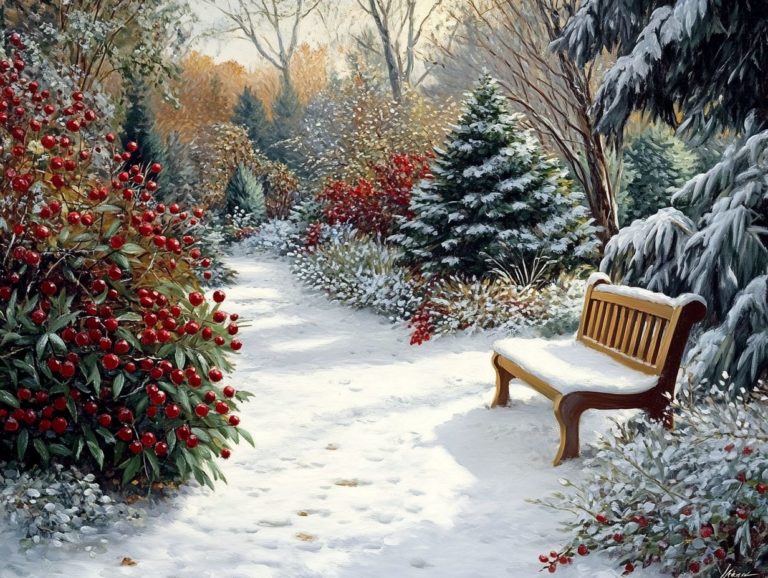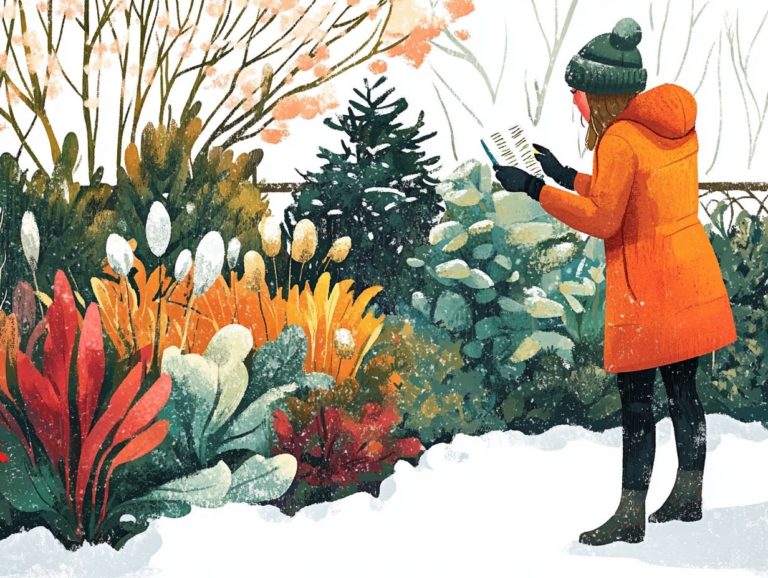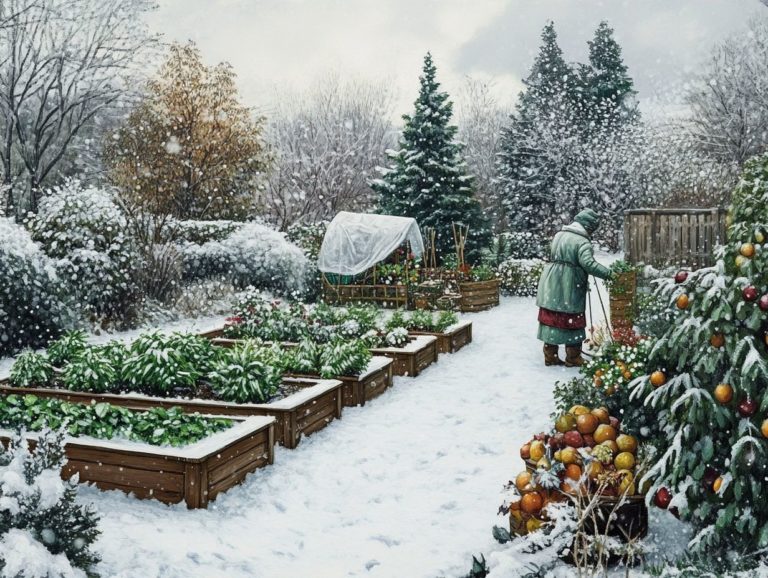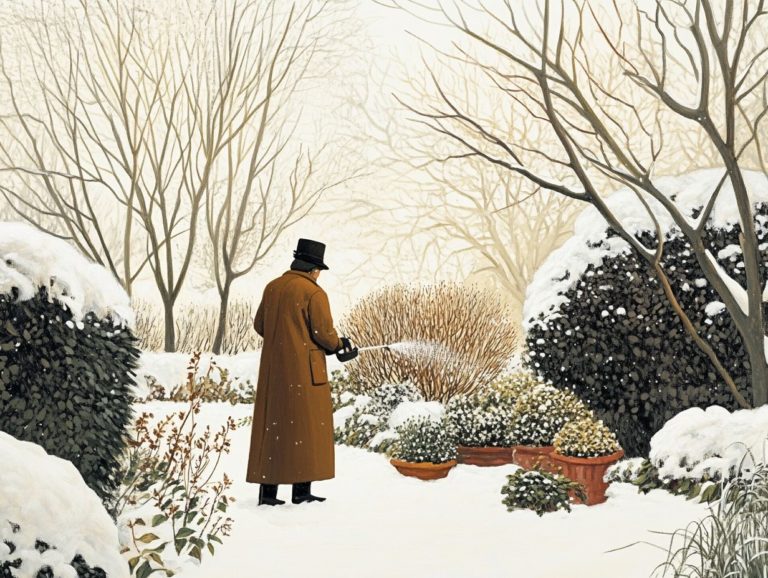What are the Environmental Benefits of Cold Gardening?
Cold gardening represents an innovative approach that empowers you to cultivate plants in cooler climates while delivering significant environmental benefits.
This article delves into how cold gardening can effectively reduce your carbon footprint and foster biodiversity. You’ll find essential guidance for embarking on this journey, including tips tailored for beginners, advice on selecting cold-hardy plants, and strategies for maintaining your garden with finesse.
By embracing cold gardening practices, you can play a pivotal role in contributing to a more sustainable and eco-friendly future.
Contents
- Key Takeaways:
- Environmental Benefits of Cold Gardening
- How to Start Cold Gardening
- Choosing Plants for Cold Gardening
- Maintaining a Cold Garden
- Frequently Asked Questions
- How does Cold Gardening help reduce greenhouse gas emissions?
- Can Cold Gardening help conserve water?
- What impact does Cold Gardening have on local biodiversity?
- Is Cold Gardening a sustainable gardening method?
- How does Cold Gardening contribute to food security?
Key Takeaways:
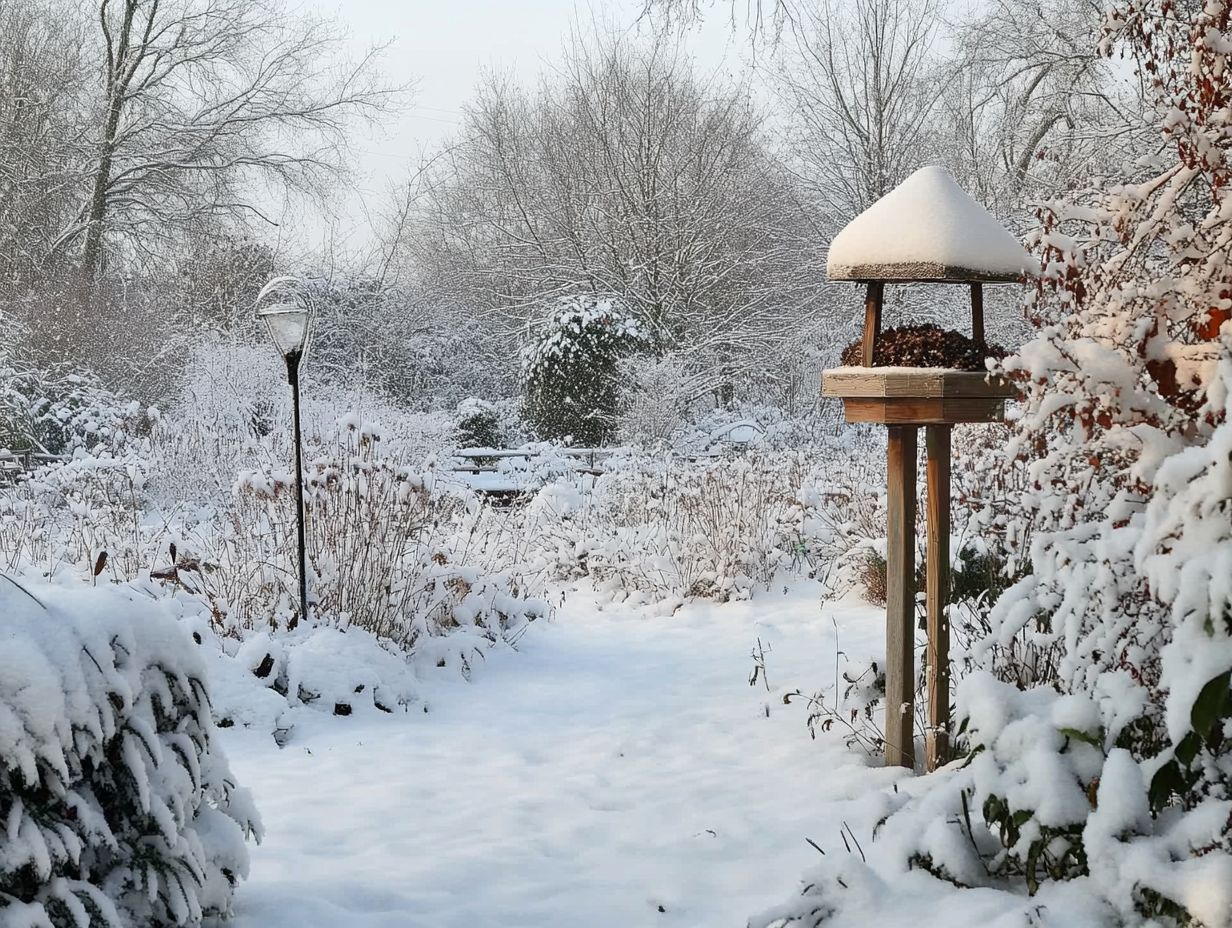
- Cold gardening can help reduce your carbon footprint by minimizing the use of energy and resources typically required for traditional gardening methods.
- Cold gardening promotes biodiversity by creating a habitat for various plants, insects, and wildlife to thrive, contributing to a healthier and more balanced ecosystem.
- By carefully selecting and maintaining cold-hardy plants, you can create a sustainable and environmentally friendly garden that can withstand colder temperatures and harsh weather conditions.
What is Cold Gardening?
Cold gardening is your ticket to cultivating plants in those chillier regions. Imagine the joy of extending your growing season and savoring fresh produce all year round!
By employing techniques like raised beds, cold frames, hoop houses, and cloches, you can nurture a range of cold-hardy vegetables and flowers even during the depths of winter. This approach not only boosts soil health by retaining organic matter but also encourages smart plant selection, allowing you to make the most of those unique microclimates the distinct climate conditions in small areas found in colder zones, like USDA Hardiness Zone 3, which refers to regions that can sustain certain plants in winter.
Cold gardening boosts food sustainability by giving you the power to reduce your dependence on store-bought produce that often comes from far away. Varieties such as kale, spinach, and certain root vegetables flourish in these conditions, providing a continuous harvest that enriches your diet even when temperatures drop.
By using protective measures like row covers and frost blankets, you can ensure that your plants withstand frost and freezing conditions, promoting resilience in challenging climates.
Cold gardening is not just innovative; it creates a fulfilling gardening experience while playing a crucial role in environmental stewardship. You become a steward of the earth as you cultivate your winter garden.
Environmental Benefits of Cold Gardening
Cold gardening presents numerous environmental advantages that significantly enhance local ecosystems and promote sustainable gardening practices. For those wondering why choose cold-climate gardening, fostering biodiversity encourages the flourishing of native wildflowers and resilient perennials that enrich local ecology and support vital pollinator populations.
This approach also improves soil health through the integration of organic matter, creating an ideal environment for cultivating organic vegetables like carrots, spinach, and kale, while simultaneously lowering the carbon footprint linked to traditional agricultural methods.
Reducing Carbon Footprint
One of the significant perks of cold gardening is how it allows you to shrink your carbon footprint linked to food production. By growing organic vegetables right in your backyard, you minimize your dependence on store-bought produce that often travels long distances.
With year-round cultivation and techniques like row covers and frost protection, you can contribute positively to your local ecosystem while savoring fresh, home-grown food even in colder climates.
This practice encourages healthier eating habits and bolsters food security in your community. Local food production directly cuts down transportation emissions, further reducing greenhouse gas outputs. Embracing sustainable gardening techniques enhances biodiversity and enriches soil health, creating a more resilient environment.
As you dive into cold gardening, are you ready to transform your garden into a winter wonderland? You become a steward of your land, raising awareness about the importance of sustainability and its critical role in combating climate change. Ultimately, by focusing on reducing reliance on imported foods, you play a crucial part in shaping a sustainable future.
Promoting Biodiversity
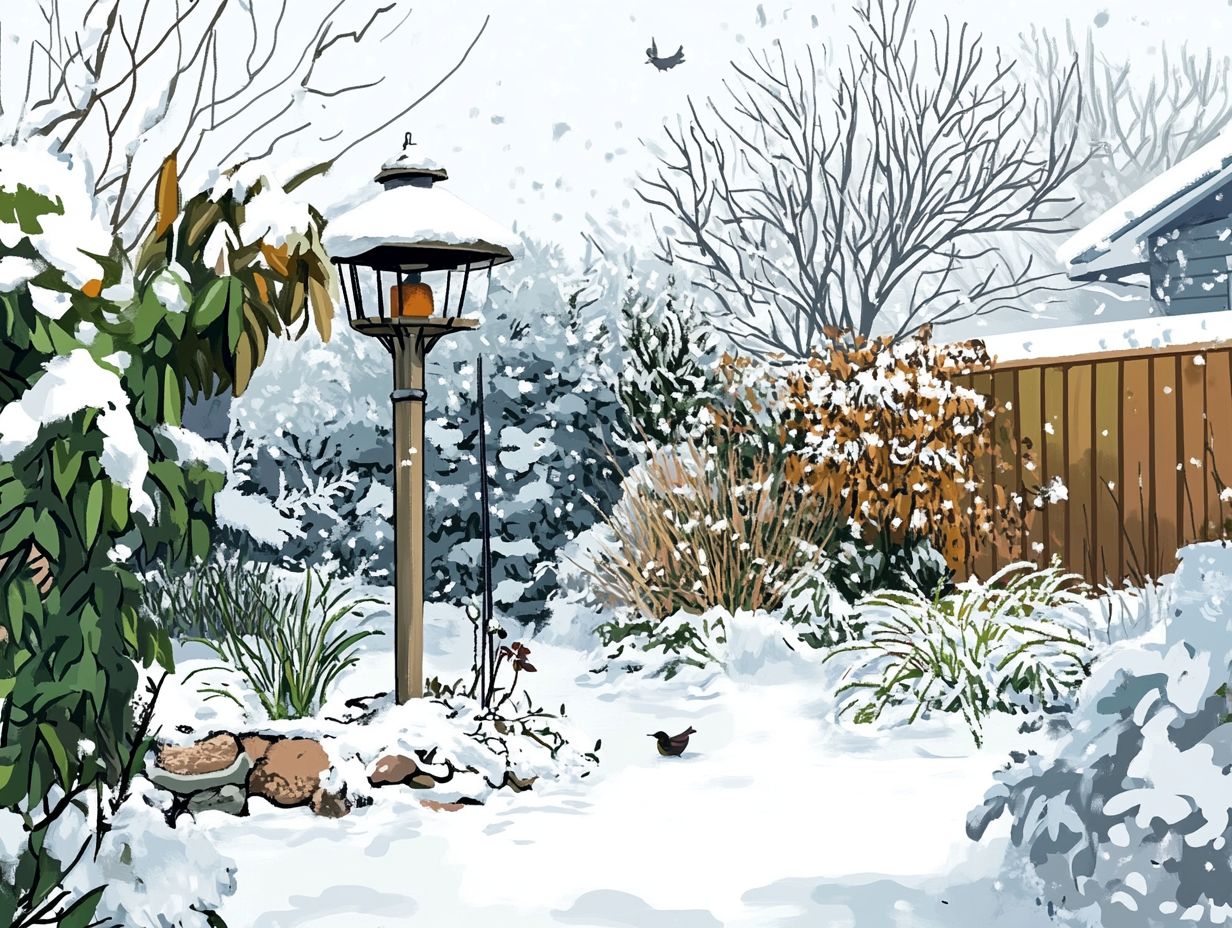
Cold gardening plays a vital role in enhancing biodiversity by encouraging you to cultivate a diverse array of plants, including native wildflowers and hardy perennials that help maintain ecosystem balance. By introducing varied plant species into your cold climate garden, you support pollinators and beneficial insects. This elevates local biodiversity while crafting visually stunning landscapes throughout the winter months.
This practice not only enriches the habitat but also boosts your gardening joy! It contributes to soil health, making it more resilient against pests and diseases. Incorporating specific varieties such as native asters and coneflowers attracts essential pollinators like bees and butterflies, strengthening the ecosystem’s natural network.
Cold gardening ensures that your plants remain active even in lower temperatures, paving the way for seasonal flora that provides year-round benefits. Embracing this approach can truly transform your garden into a thriving sanctuary for wildlife, showcasing the interconnectedness of nature and underscoring the importance of diversity in maintaining ecological balance.
How to Start Cold Gardening
Starting a cold garden can be a thrilling venture for both novice and seasoned gardeners. This offers the opportunity to cultivate resilient vegetables and stunning flowers throughout the winter months.
To embark on this journey, keep key considerations in mind. Selecting the right materials for your raised beds is crucial. Also, be aware of timing your transplants for maximum impact.
Using protective tools like cloches and cold frames will help ensure that your plants thrive, even in challenging winter weather.
Tips for Beginners
For those new to cold gardening, embracing a few key strategies can dramatically increase your chances of success, especially in areas prone to frost. Start by selecting frost-tolerant vegetable varieties like beets, peas, and kale.
Don’t underestimate the importance of monitoring soil moisture and adding organic matter; these practices are vital for enhancing soil health and drainage.
Along with choosing the right plants, understanding your local climate conditions can significantly impact your gardening results. By observing seasonal fluctuations and frost dates, you can effectively plan your planting schedule.
Employing row covers or cold frames can be a game-changer. They provide essential protection against unexpected temperature drops and create a microclimate that encourages growth. Regular maintenance, including timely watering and weeding, is crucial for helping your plants thrive despite harsh conditions.
Keep these tips in mind and start taking action now to cultivate a vibrant garden in the coldest climates!
Choosing Plants for Cold Gardening
In the realm of cold gardening, selecting the right plants is paramount to achieving a flourishing and productive garden during the chillier months. Prioritize cold-hardy varieties, which are plants that can survive in low temperatures, including resilient perennials, annuals, and biennials.
Additionally, consider the advantages of cultivating self-sown annuals, which can provide a delightful continuity of growth throughout the season.
Cold-Hardy Plant Options
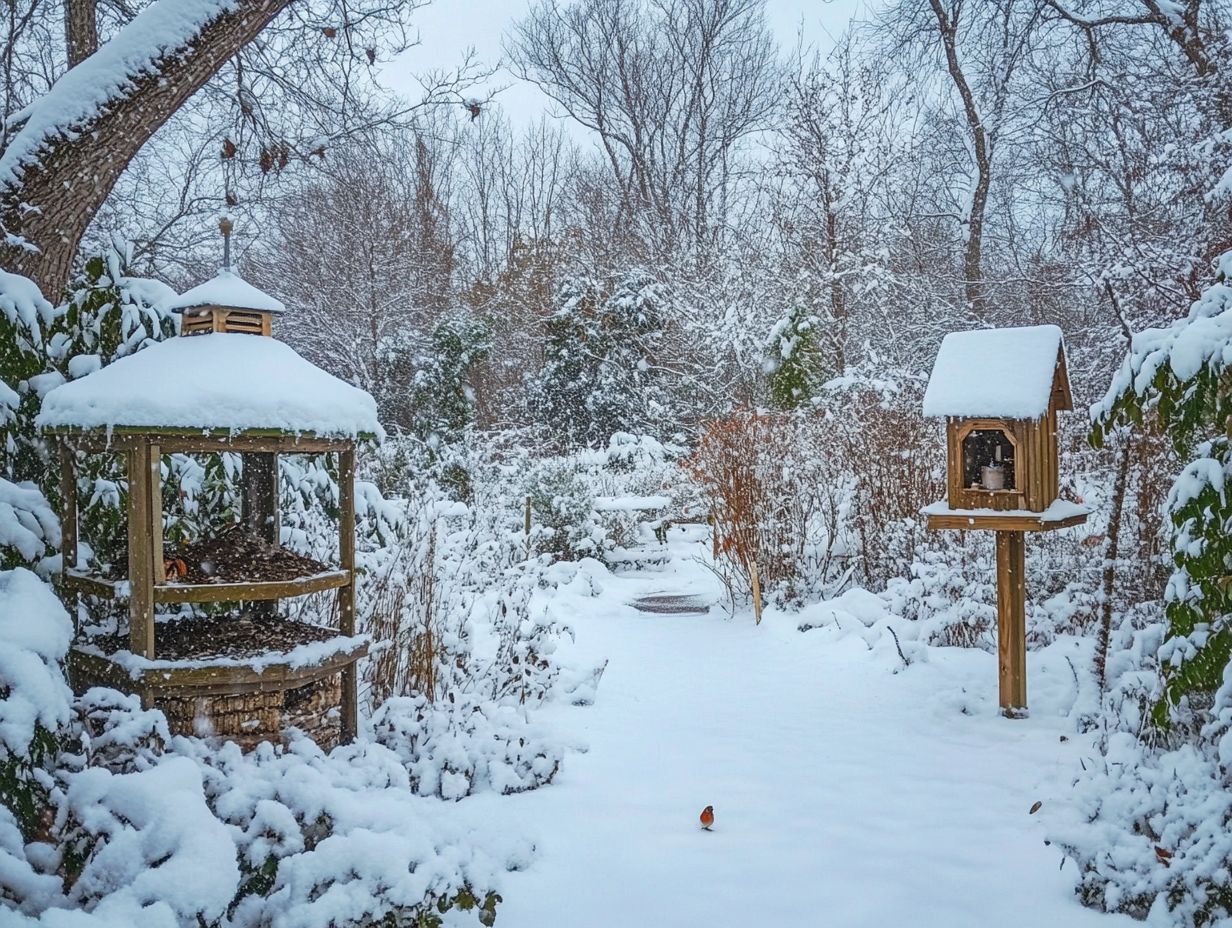
If you’re looking to keep your garden productive in the chilly months, you have a wealth of cold-hardy plant options at your fingertips, especially in USDA Hardiness Zone 3. Resilient vegetables like carrots, spinach, and kale can thrive in these conditions. Flowers such as Digitalis purpurea and Alcea rosea also prove their mettle when the going gets tough.
Beets and Brussels sprouts are excellent choices that continue to yield impressive results, even with frost looming. These vegetables can handle cold; they taste sweeter after a frost.
In terms of flowers, pansies and snapdragons add a delightful splash of color during the cold months. They thrive in well-drained soil and prefer full sun to partial shade, making them versatile gems for any cold garden. By ensuring proper spacing and mulching, you can enhance their growth, creating a vibrant display even when temperatures drop.
Maintaining a Cold Garden
Keeping a cold garden thriving is exciting and rewarding! It requires careful attention to detail and commitment to practices that nurture plants through the winter months. Regular garden maintenance is essential. Monitoring soil health and moisture levels will ensure that your winter vegetables and hardy flowers not only survive but truly thrive, especially in regions where snowfall and frigid temperatures are the norm.
Best Practices for Cold Gardening
Implementing best practices in cold gardening is essential for protecting your plants from harsh winter conditions and ensuring a bountiful harvest of organic vegetables. Techniques like using row covers, cold frames, and effective mulching provide critical frost protection while helping maintain optimal soil moisture.
Choosing cold-tolerant varieties boosts your garden’s resilience against subzero temperatures. Incorporating season extenders like hoop houses or greenhouses can further strengthen your protective measures, allowing you to cultivate crops well into the colder months.
Regularly monitoring soil temperature and moisture is crucial. Use thermometers and moisture meters to guide your watering practices efficiently. Ensuring your plants receive adequate sunlight during winter is vital. Place your garden strategically to maximize sun exposure, promoting healthy growth even in chilling conditions.
Understanding the importance of changing the types of plants you grow in each area of your garden each year can lead to healthier soil, ultimately benefiting your cold gardening efforts.
Impact on the Environment and Sustainability
The impact of cold gardening goes well beyond your own garden; it plays a vital role in promoting sustainability and enhancing local ecosystems. To understand how it interacts with larger environmental issues, consider exploring the impact of climate change on cold gardening. By prioritizing organic matter and reducing reliance on commercially produced food, cold gardening supports environmentally friendly practices that can lead to healthier soil and increased biodiversity.
This approach encourages a harmonious relationship with nature, providing habitats for beneficial insects and pollinators while incorporating native plants that thrive in your local climate. It even contributes to carbon sequestration, helping to combat climate change by storing carbon in the soil.
As more gardeners like you embrace these practices, the collective outcome can transform neighborhoods into greener spaces, improve air quality, and foster a sense of community united by shared environmental goals. Cold gardening not only nourishes the earth but also cultivates a sustainable mindset for generations to come.
Watch this video to learn more about the benefits of cold gardening.
Frequently Asked Questions
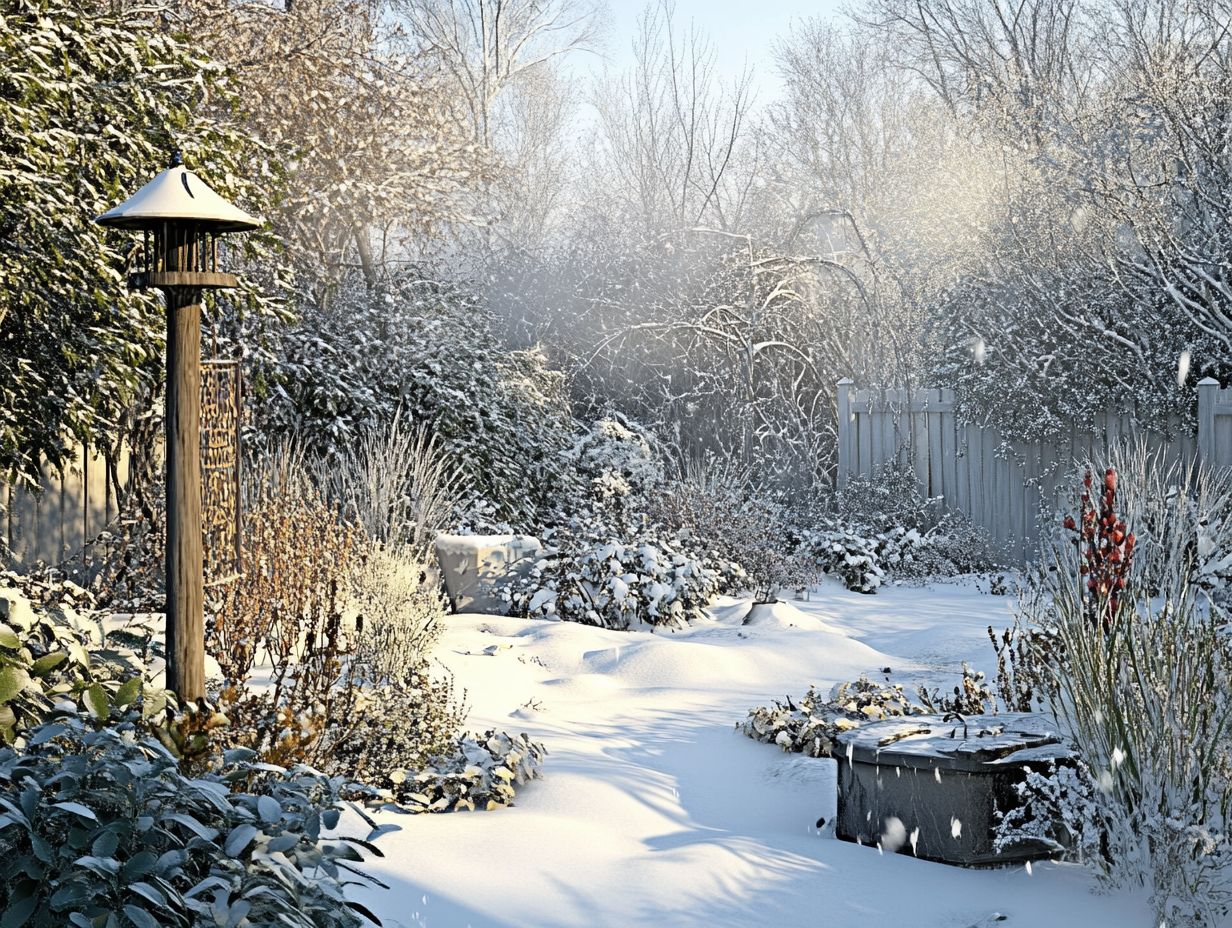
How Does Cold Gardening Benefit the Environment?
Cold gardening refers to the practice of growing plants and vegetables in colder climates. For those interested in this method, understanding what cold-climate gardening entails has several environmental benefits, including:
How does Cold Gardening help reduce greenhouse gas emissions?
Cold gardening reduces transportation and refrigeration needs. This means lower carbon emissions, helping to combat climate change.
Can Cold Gardening help conserve water?
Absolutely! Cold gardening is a fantastic way to save water.
Colder climates have lower evaporation rates, which means less water for irrigation. Techniques like mulching and planting compatible plants help retain soil moisture.
What impact does Cold Gardening have on local biodiversity?
Cold gardening supports local biodiversity by promoting native and adapted plants.
This creates habitats for various insects, birds, and other wildlife.
Is Cold Gardening a sustainable gardening method?
Yes, it’s a sustainable method! Cold gardening reduces the carbon footprint of food production and conserves water.
Techniques like composting and crop rotation maintain healthy soil for the long term.
How does Cold Gardening contribute to food security?
Cold gardening boosts food security in colder climates by providing fresh produce year-round.
This lessens the need for imported produce and strengthens local food systems. Plus, it can thrive in small spaces, making it great for urban gardens!
Interested in trying your hand at cold gardening? Start today and contribute to a healthier planet!



